|
Spring is snake season and as the temperature rises, snakes leave their underground shelters in search of food. It is a slow process and they become more active as the temperature increases. Once the first summer rains fall, they become very active and sightings are common.
Spring is also mating time for most snakes, causing females to emit pheromones to attract males. While snakes do not move in pairs, females may attract more than one male during the mating season and seeing three or four snakes together can happen.
There is no such thing as a ‘snake nest’, and most snakes lay their eggs around mid-summer and move off, abandoning them. The eggs are generally laid underground in a burrow or under leaf-litter, rocks, and logs. Baby snakes hatch (or are born) around mid to late summer and the young all move off independently in search of food and suitable habitat.
|
|
|
|
|
|
This is also the time of the year that snakes are found in suburban gardens and, while most common garden snakes are harmless and of no concern to humans, venomous snakes do also venture into gardens occasionally. Distinguishing between harmless and dangerous snakes is not always easy and should a snake be spotted in your garden or in a building, immediately retreat at least 5 m and remove cats and dogs from the area. Never try to kill snakes, as this puts you far too close to them, and don’t try to catch a snake unless you have training in how to do so safely. Observe the snake from a safe distance and call a snake remover. The free African Snakebite Institute App, ASI Snakes (http://bit.ly/snakebiteapp) has details of over 700 snake removers country wide and will show those closest to you with a cell number.
|
|
|
|
Snakes commonly encountered in gardens may include the following:
The Brown House Snake is found throughout South Africa and is common in suburban gardens, hence its name. It is a harmless nocturnal snake that feeds largely on rodents and shelters under rocks, logs, and old building material. It is easily identified by a light line that runs from the nose through the eye to the back of the head while the overall body colour is dark to medium brown.
|
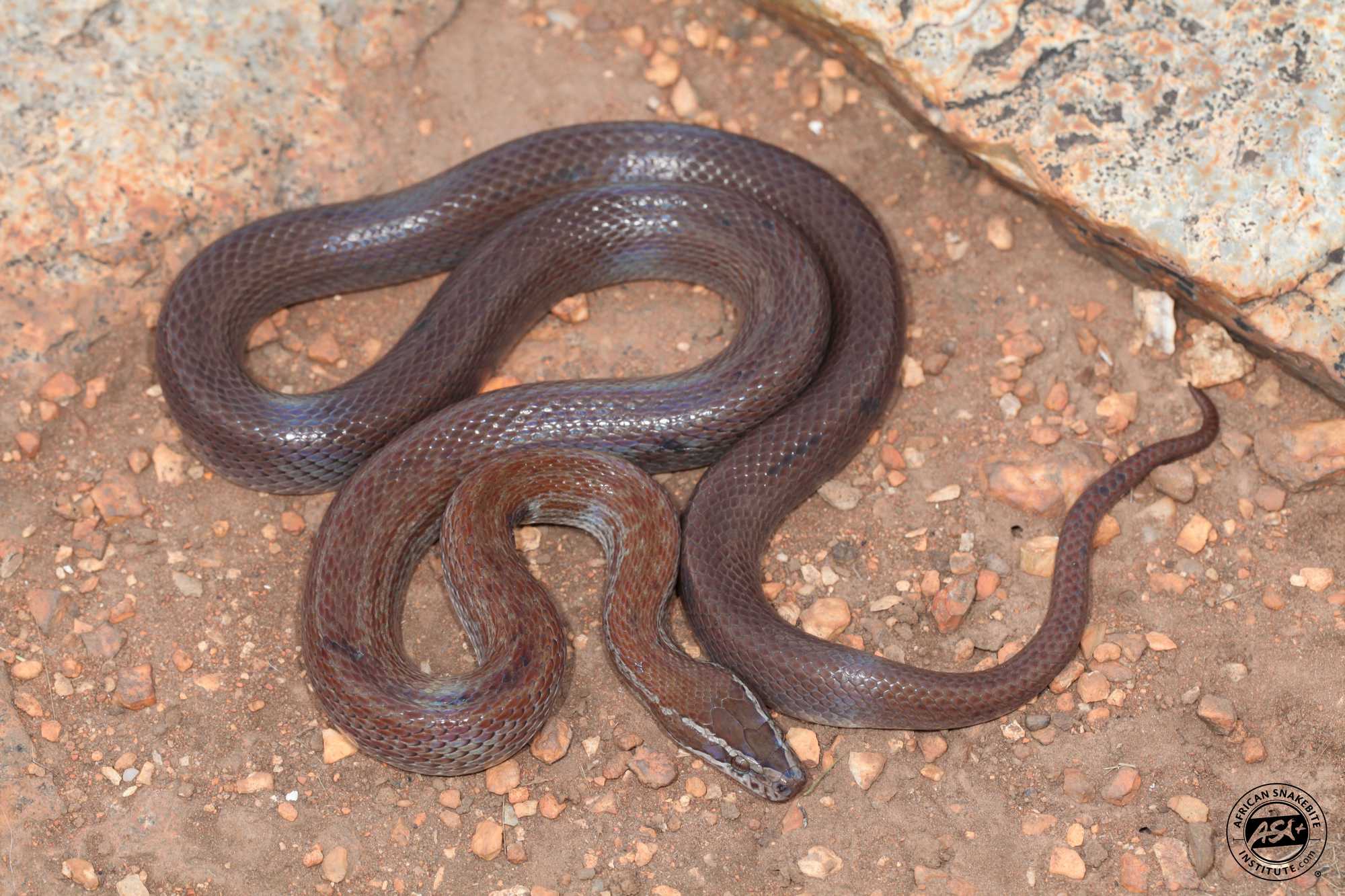 |
|
A harmless Brown House Snake. Note the pale stripes above the eyes.
|
|
|
|
The Herald or Red-lipped Snake is a common inhabitant of suburban gardens, especially those with irrigation systems or water features as it feeds largely on toads, emerging at night. It is mildly venomous and poses no threat to humans or pets like cats and dogs. It averages around 30 – 60 cm in length and the head is darker than the rest of the body which is light to dark grey or olive green. Some individuals have bright red or yellow lips and when cornered, it puts up quite an impressive display, coiling back, flattening its head and striking repeatedly.
|
 |
|
A mildly venomous Herald Snake in threat pose. Note the black on the temple region and red lips in this individual.
|
|
|
|
Our BEST-selling 21 LED Scorpion torch is back!
The ASI 21 LED Scorpion Torch emits Ultra-Violet fluorescent light which exposes UV reflective markings in a scorpion's exoskeleton. Heavy aluminium casing. UV Wavelength 395nm (ideal for scorpion detection).
Length 95 mm
Average diameter 32 mm
Batteries 3 x AAA (not included)
Weighs 85 g
Price R195.00
|
|
|
| Order here |
|
|
|
The Rhombic Egg-eater feeds exclusively on eggs and is attracted by bird nests and aviaries. It is completely harmless and hunts at night. Needless to say, it is an excellent climber. Most individuals are light grey to brown above with dark patches down the back and sides as well as some dark V markings on the head and neck. It may be confused with the Rhombic Night Adder. This snake averages 40 – 60 cm in length.
|
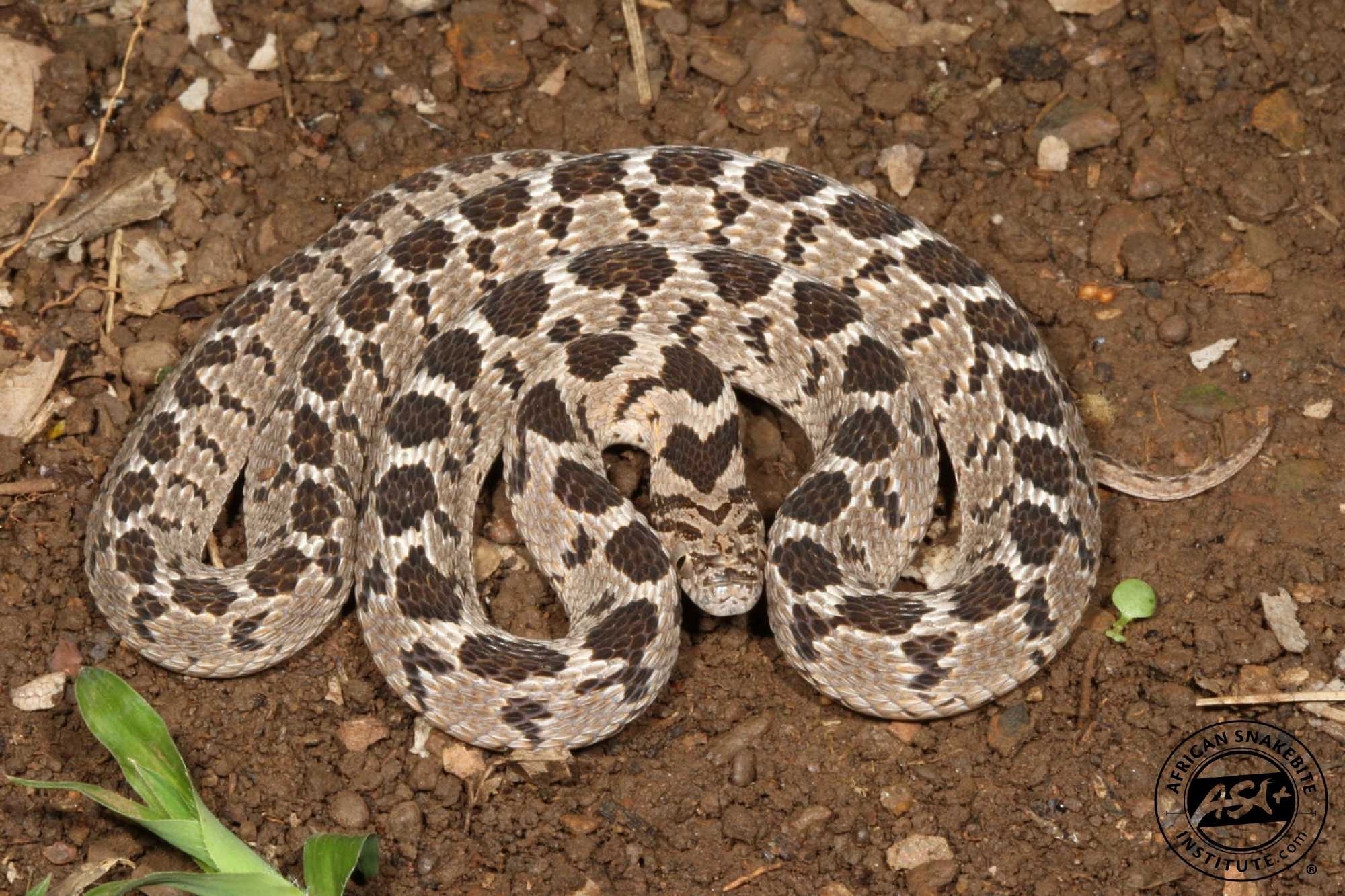 |
|
A harmless Rhombic Egg-eater. These snakes feed exclusively on eggs.
|
|
|
|
The Common Slug-eater is a small snake that averages 25 – 35 cm in length. It favours damp localities where it feeds on slugs and snails. It is a harmless little snake and is often captured by cats or found under garden pots. It is usually reddish-brown to grey with darker sides and sometimes with a spotted line down the centre of the back.
|
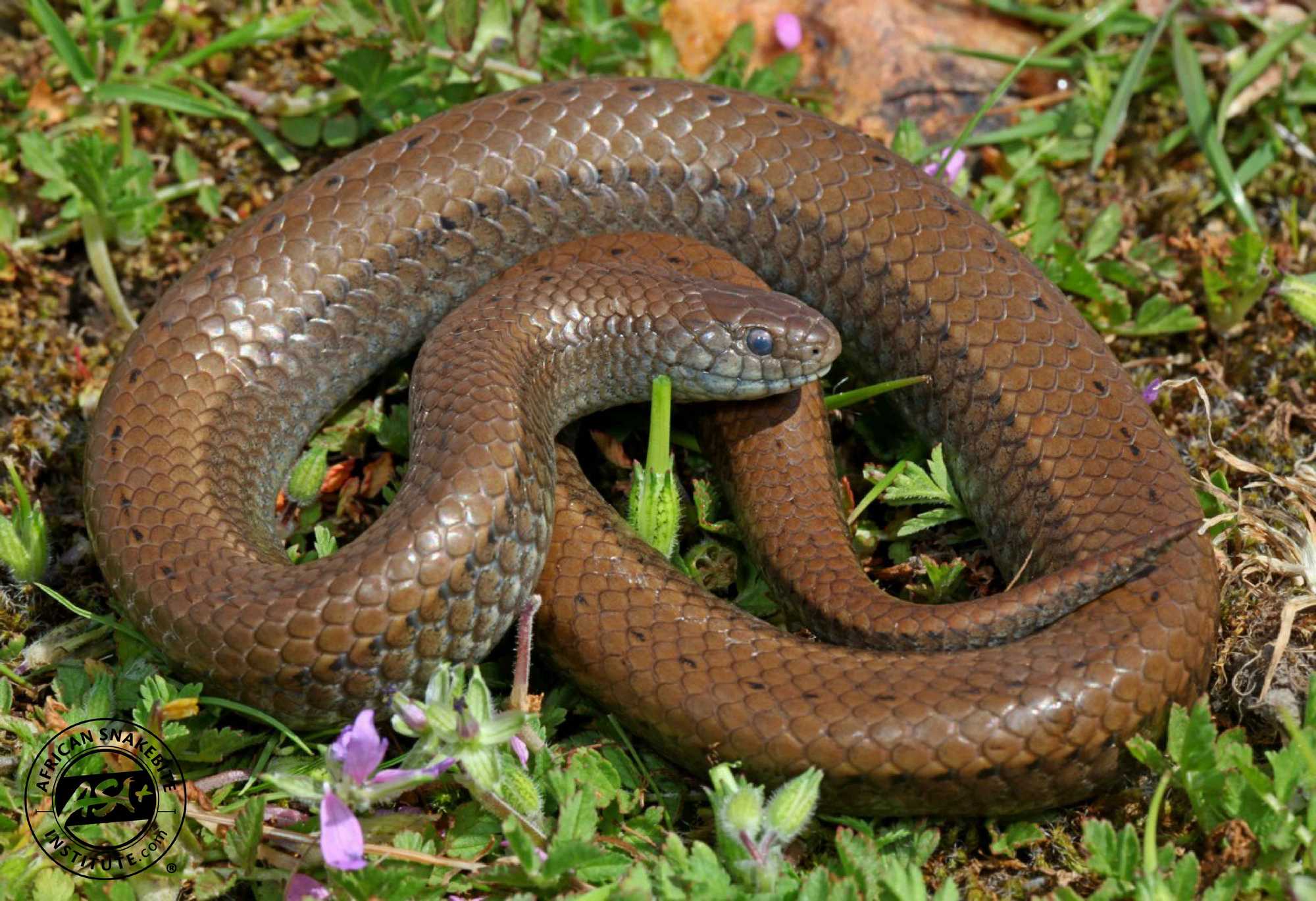 |
|
A harmless Common Slug-eater, showing the reddish-brown colouration and darker sides.
|
|
|
|
The Spotted Bush Snake feeds on small frogs and geckos and is an excellent climber, often seen hunting geckos in thatched roofs or between the walls and roofs of outbuildings. It is harmless and active during the day. It averages 50 – 70 cm in length and is often mistaken for the Boomslang or Green Mamba, but this snake is bright green in colour with dark spots on the front half of the body.
|
 |
|
A harmless Spotted Bush Snake with dark splotches on the front half of the body.
|
|
|
|
ASI Huntsman Snake Gaiters - proudly made in South Africa, are flexible snake gaiters that weigh 370 grams each.
The outer shell is made from a heavy duty outdoor coated polyester, which is water resistant. And the inner is made from a flexible non-woven barrier.
Three adjustable buckles ensure a decent fit.
The ASI Huntsman Snake Gaiters have been tested against bites from the Puff Adder, Cape Cobra, Snouted Cobra and Black Mamba with no penetration during testing.
Price R1300.00
|
|
|
| Order here |
|
|
|
The Mole Snake averages around 60 cm – 1,2 m but may reach a length of 2 m in the Western Cape. It is a non-venomous constrictor that feeds on rodents and is often found in mole rat burrows. This diurnal snake varies in colour from pitch black to dark grey, dark brown, brick red or light brown. The juveniles are tan to grey with a series of spots that may fuse to form zig-zag patterns down the back.
|
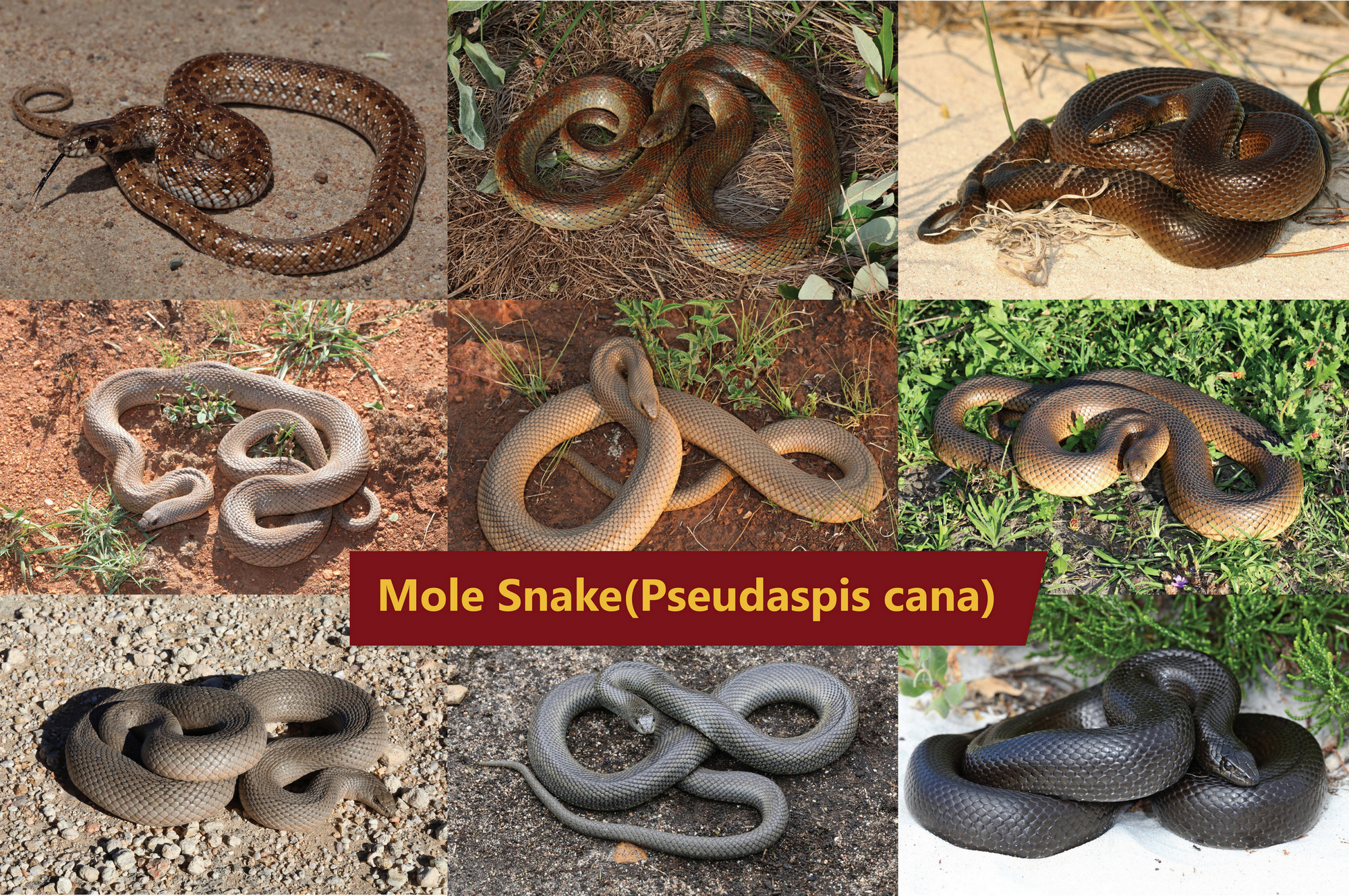 |
|
Non-venomous Mole Snakes showing the colour variations of the species.
|
|
The Spotted Skaapsteker is mildly venomous and averages 40 – 60 cm in length. It is a fast-moving snake and is usually quick to disappear. This snake is mildly venomous and poses no threat to humans. It has dark spots down the body with those found in the grasslands of South Africa having pale stripes down the body.
|
 |
|
A mildly venomous Spotted Skaapsteker from the grassland region showing spots on the neck becoming stripes down the body.
|
|
There are several grass and sand snakes – all active during the day, quick-moving. Most of these snakes average 40 – 70 cm in length and have longitudinal stripes from head to tail. They are all mildly venomous and pose no threat to humans.
Unfortunately, there also are some venomous snakes that are often found in suburban gardens.
The Rhombic Night Adder, like the Herald Snake, favours damp localities as it feeds largely on toads. Despite its common name it is more active during the day and bites occur largely when people stand on them. It averages 40 – 60 cm in length but may reach 1 m. This snake can be identified by the singular dark V marking on the head and dark patches down the back on a brown background. The venom of this snake, though not considered potentially lethal, is cytotoxic and may cause severe swelling and discolouration around the bite site. Victims may have to be hospitalised for pain treatment and rehydration. Symptoms may last a week or two and tissue damage is rare. There is no antivenom for Night Adder venom.
|
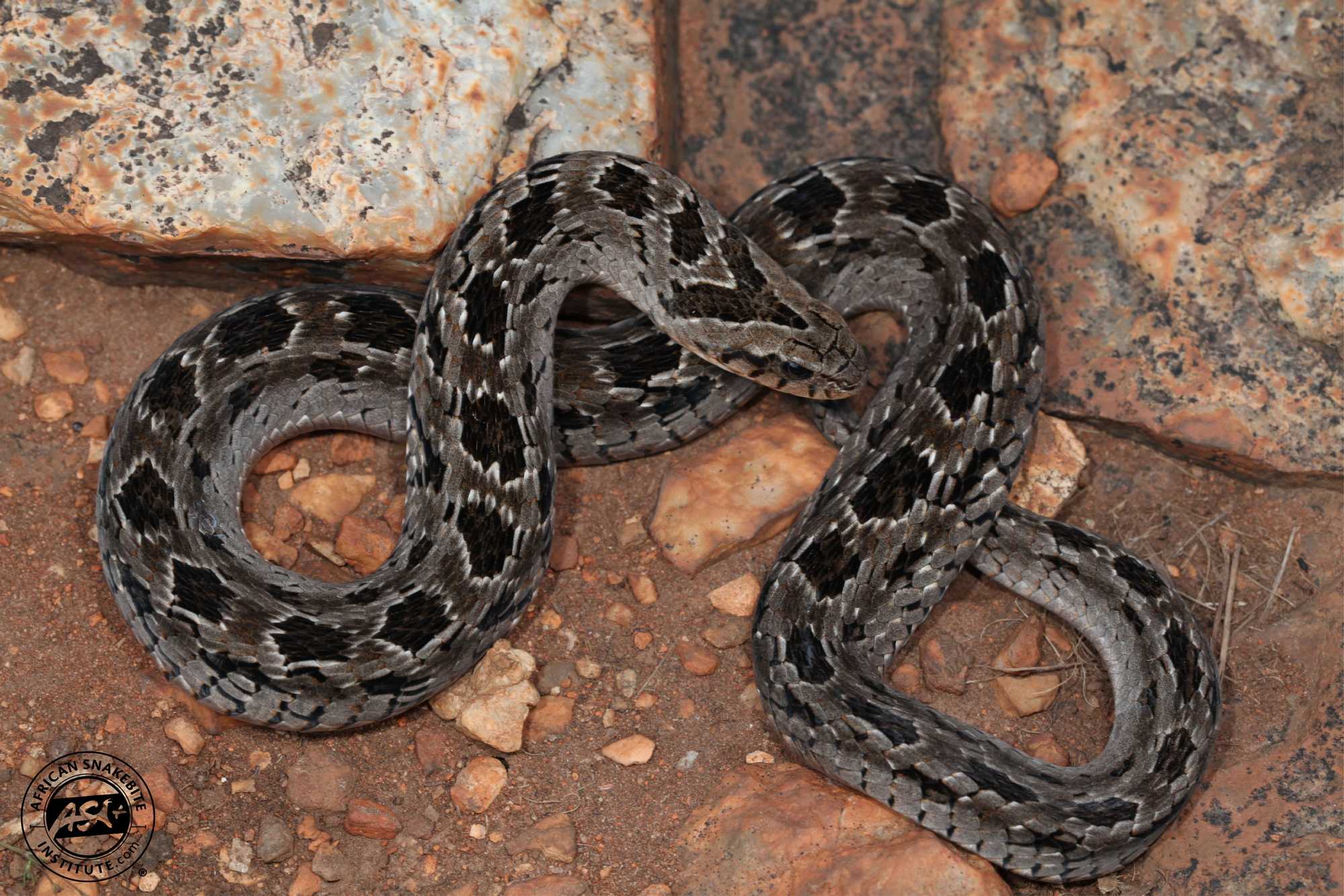 |
|
A venomous Rhombic Night Adder has a prominent dark V pattern on the nape of neck.
|
|
|
|
Snake Handling Equipment
Combo J includes:
JM150 Snake Tong
1.2 m Collapsible Snake Hook
750 mm snake tube
First Aid for Snakebite Booklet
Safety Glasses for Spitting Snakes
And A1 Snakes of Southern Africa Poster
Price R1895.00
|
|
|
| Order here |
|
|
|
The Stiletto Snake, previously known as a Burrowing Adder, is a fossorial snake that comes to the surface on warm summer nights, especially after rain. It is a smallish snake, averaging 40 – 60 cm, usually a plain dark brown or blackish colour with a similar-coloured belly or a white belly. Individuals often end up in swimming pools. This little snake has large fangs that protrude out of the side of the mouth, even when closed, and many people get bitten when handling one. It cannot be handled safely, even if gripped behind the head. Like the Night Adder, its venom is cytotoxic causing severe pain, some swelling, and in severe cases tissue damage. Many victims lose a digit or two and there is no antivenom for the bite of this snake.
|
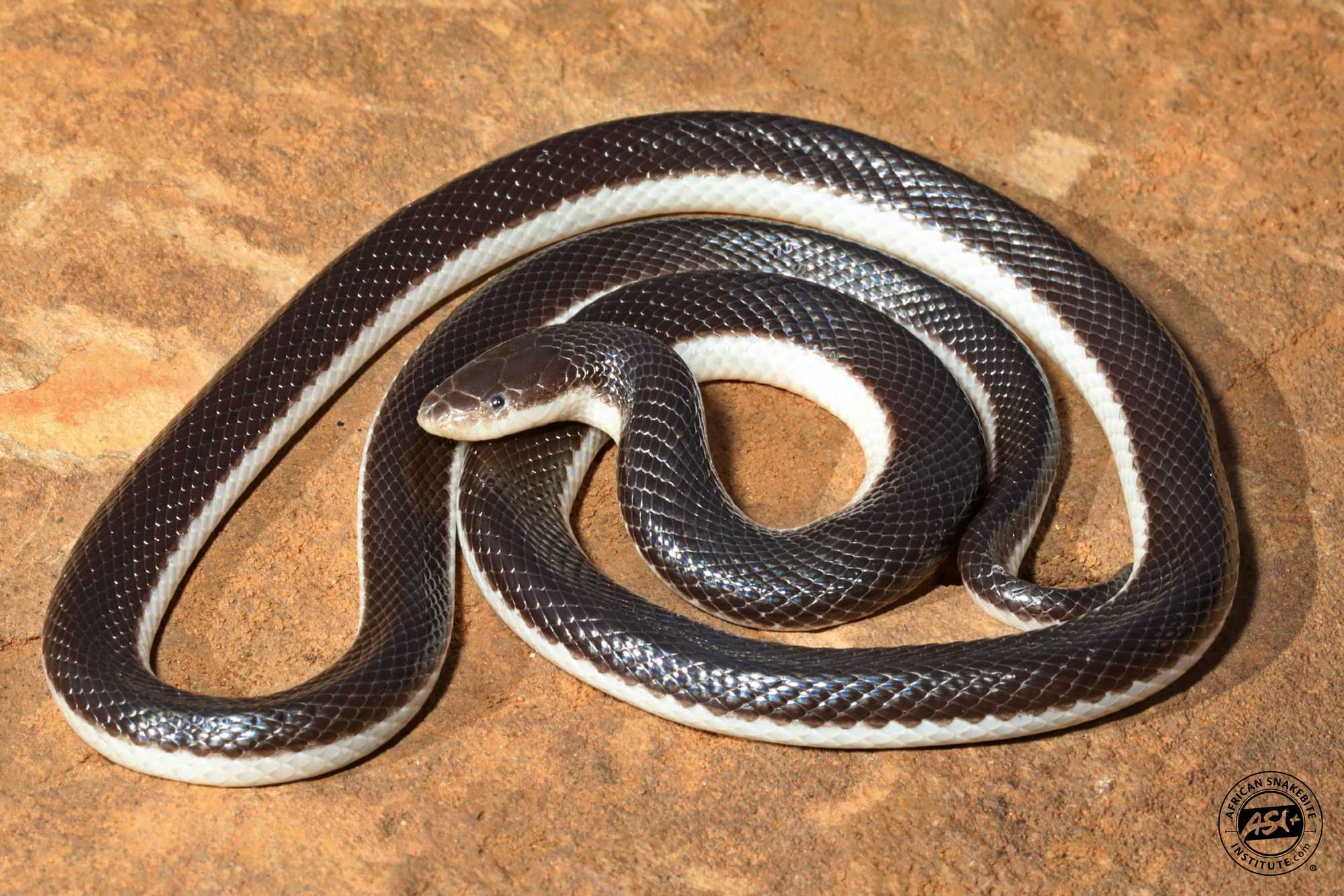 |
|
A venomous Stiletto Snake showing a white belly and the small eyes.
|
|
The Rinkhals is a grassland species over most of its range and common on smallholdings in Gauteng, the Free State, North-West province, Mpumalanga, eSwatini, Lesotho and the KwaZulu-Natal Midlands but extends into the Eastern Cape and Western Cape. There is an isolated population in Eastern Zimbabwe. It is a shy and elusive snake that usually has a permanent hole and is quick to disappear down it when threatened. Dogs often corner a Rinkhals, and the snake will quickly form a hood, displaying two or three white bars on the neck. It spits its venom and will bite if grabbed by a dog. Rinkhals venom is potently cytotoxic with some neurotoxic properties and bite victims need to be hospitalised. If a dog is bitten it needs to be taken to a vet urgently. The SAVP polyvalent antivenom is effective against the venom of this snake and human fatalities are virtually unheard of. Venom in the eyes of people or animals must be rinsed out with copious amounts of water as soon as possible.
|
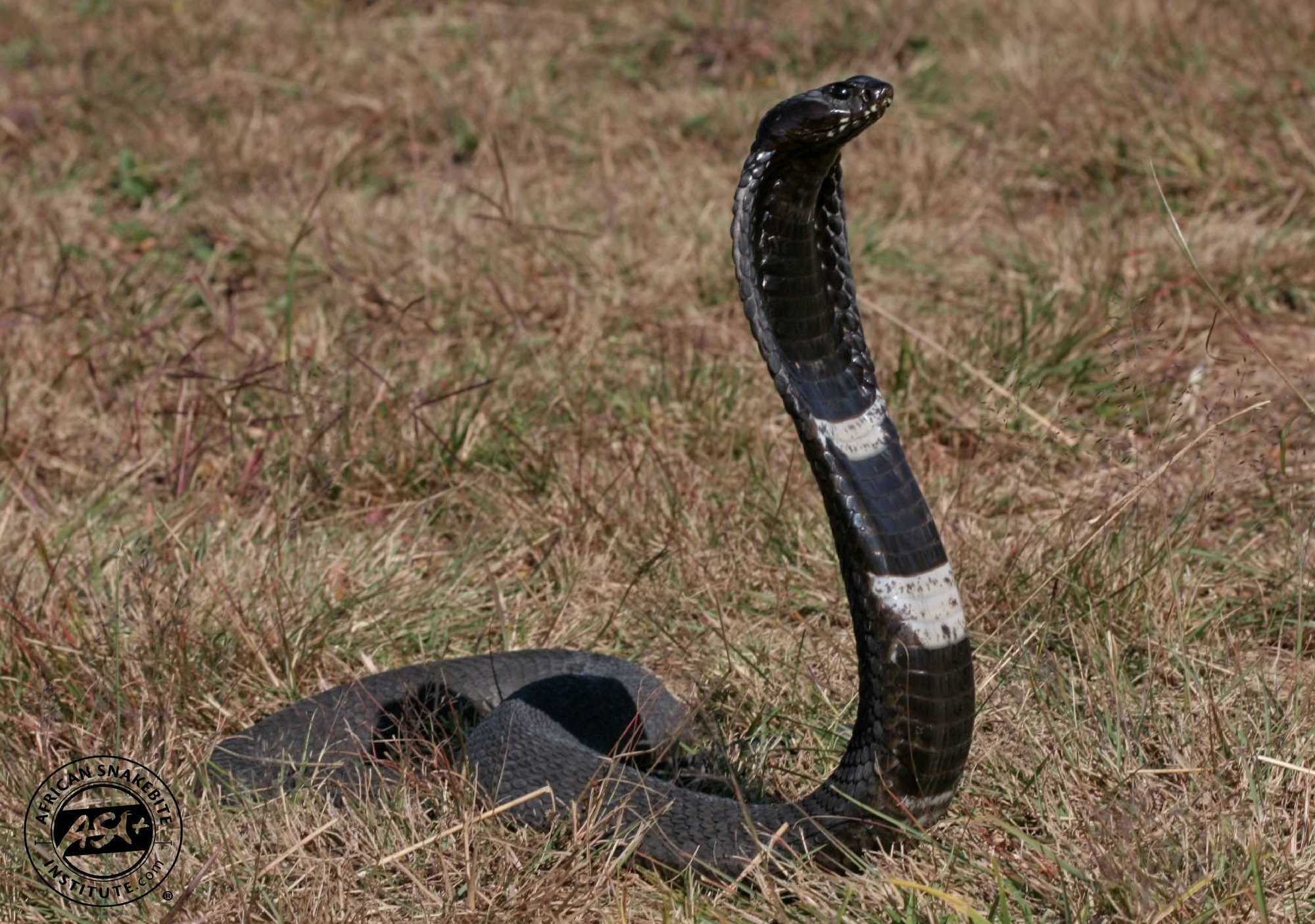 |
|
A typical defensive pose of a Rinkhals, showing the characteristic white bars on the throat.
|
|
The Puff Adder is widespread over much of South Africa and often ends up in suburban gardens. It is a bulky and sluggish snake that relies on camouflage to escape detection. Puff Adders average 70 – 90 cm in length and rarely exceed 1,25 m in southern Africa. Its venom is potently cytotoxic, causing progressive pain, swelling, blisters and severe tissue damage. Dogs are often bitten by this snake and need to be taken to a vet urgently. The SAVP polyvalent antivenom is effective against the venom of this snake and human fatalities are rare.
|
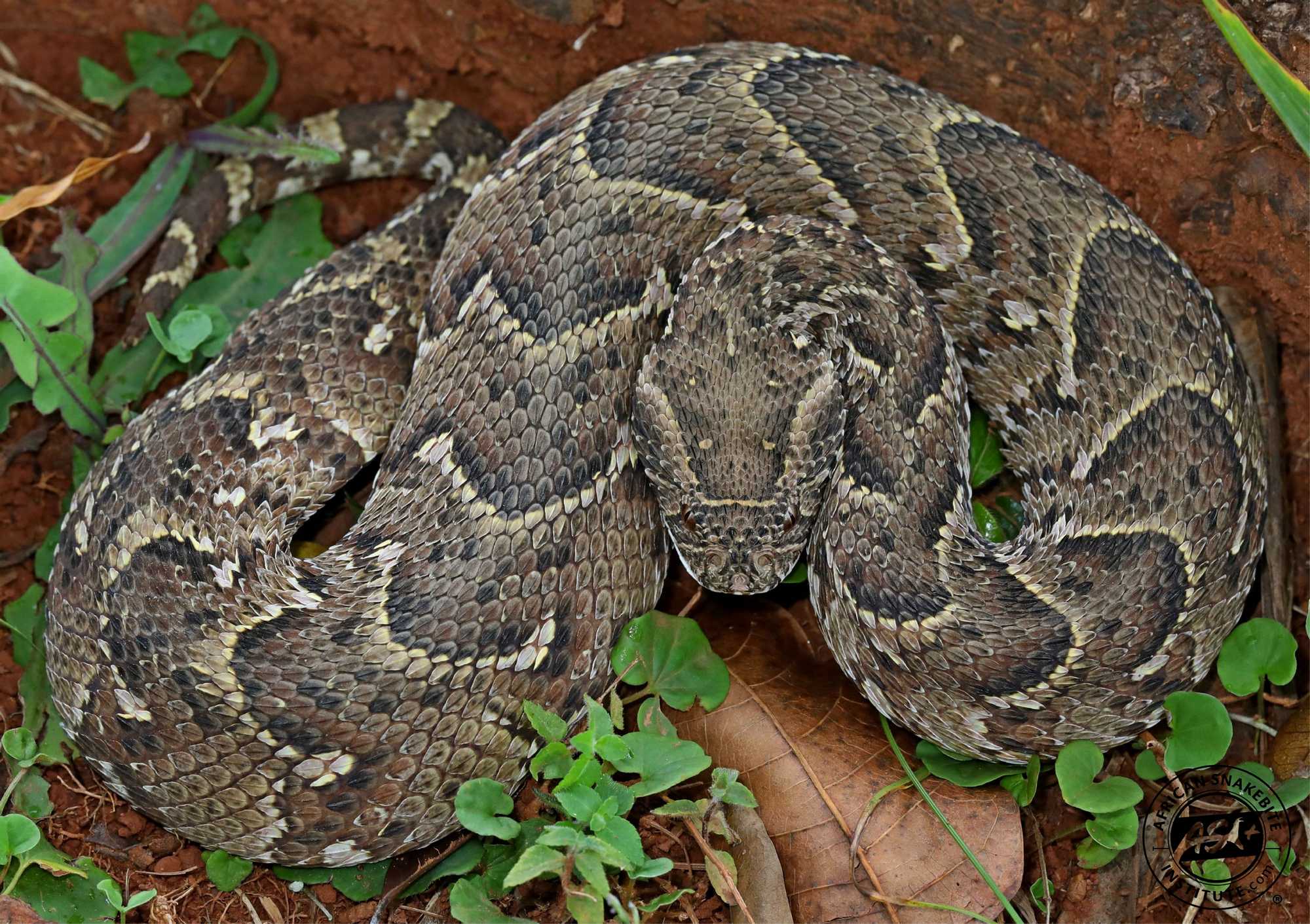 |
|
A highly venomous Puff Adder curled in a defensive pose.
|
|
The Mozambique Spitting Cobra is one of our most problematic snakes. It occurs from southern KwaZulu-Natal northwards into eSwatini (Swaziland), Mozambique, Mpumalanga, northern Gauteng, Limpopo, Northwest and northward into the eastern parts of southern Africa and southern East Africa. It is largely active at night and is notorious for ending up in huts, houses and game lodges and biting people while asleep. These bites are often to the face, arms, hands, and chest and appear to be a feeding response – they are confusing sleeping humans for a meal. Ensure that exit doors seal well or install mosquito-proof doors. People in rural areas are encouraged to sleep under mosquito nets. The venom of this snake is potently cytotoxic, causing pain, swelling and tissue damage. The SAVP polyvalent antivenom, if administered early and in large quantities, is effective against the venom of this snake and human fatalities are rare. This snake also spits its venom.
|
 |
|
A highly venomous Mozambique Spitting Cobra ready to spit.
|
|
|
|
ASI Smart Pressure Bandage
The smart pressure bandages have printed rectangles on them and when applying the bandage it must be stretched until the rectangles form squares – the correct pressure is attained every time.
Only for use in cases of confirmed Black Mamba or Cape Cobra bites.
Price includes a FREE First Aid for Snakebite Booklet.
Measures 200 cm x 10 cm and are washable and reusable.
Price R195.00
|
|
|
| Order here |
|
|
|
The Cape Cobra is one of our most dangerous snakes in Southern Africa and is often found in suburban gardens and even houses. It averages 1,2 – 1,6 m and is active during the day. Like all snakes, it is not aggressive and is quick to escape but when threatened it will form a hood and stand its ground. It varies in colour from very dark brown to medium brown, light brown, yellow or orange and may have speckles. Cape Cobra venom is potently neurotoxic and can quickly affect breathing. Victims need to be hospitalised urgently. The SAVP polyvalent antivenom is effective against the venom of this snake.
|
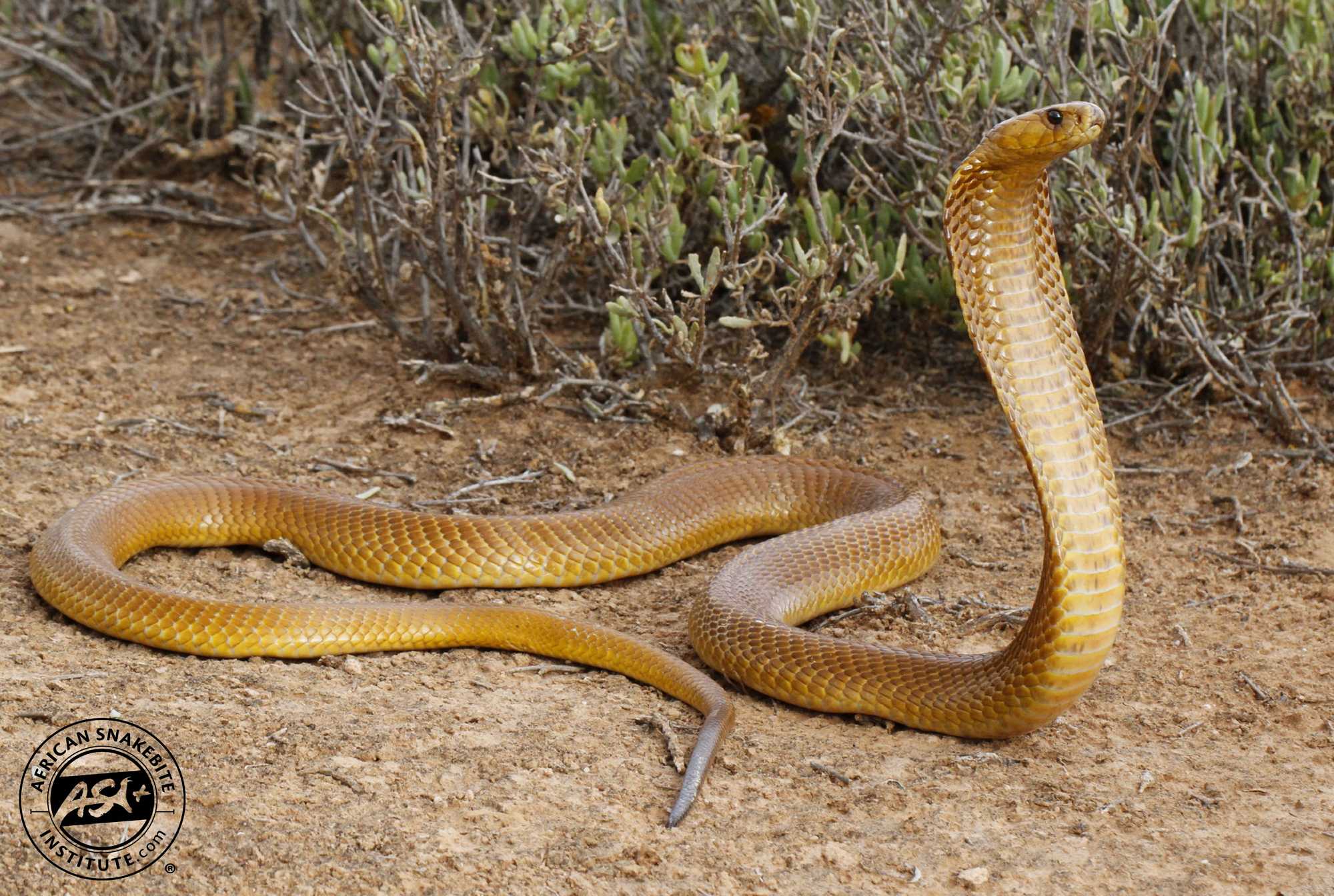 |
|
A highly venomous Cape Cobra in defensive pose.
|
|
The Black Mamba is our longest venomous snake, averaging 2,2 – 2,8 m in length but reaches a maximum length of 3,8 m. It is a shy and nervous snake and is very quick to escape if given the chance, but if cornered it gapes exposing the black inner lining of the mouth, may form a narrow hood and will bite readily if it cannot get away. It is not an aggressive snake and bites from a Black Mamba are rare. It is not a black snake but is usually light to dark grey or olive brown. Like the Cape Cobra, its venom is potently neurotoxic and can quickly affect breathing. Victims need to be hospitalised urgently. The SAVP polyvalent antivenom is effective against the venom of this snake.
|
 |
|
Black Mambas are seldom black and are usually light to dark grey or olive-brown in colour.
|
|
First Aid for Snakebite
The most important first aid for a human in the event of a snakebite is to get the person to the nearest hospital as quickly and as safely as possible. Bear in mind that it is a lack of oxygen that will kill a person in the short term and the two most dangerous snakes are the Cape Cobra and Black Mamba.
Do not:
· Apply an arterial torniquet.
· Cut and try to suck the venom out.
· Apply ice or heat.
· Do not inject cortisone, antihistamine or antivenom
Get the victim to the nearest hospital as soon as possible. This is by far the most important first aid measure. Keep the number of the closest hospital with a trauma unit, as well as the closest private ambulance service on your cell phone and check the numbers once saved.
Download the free ASI App, ASI Snakes on your cell phone (http://bit.ly/snakebiteapp).
Identification of the snake may be helpful to the treating doctor; however it is not essential, and you should not put yourself or others in further danger by trying to capture or kill a snake. If you are able, get a photograph of the snake from a safe distance.
Should you require more information about first aid for snakebite, like the use of pressure pads, pressure bandages and respiratory support, please go to the first aid section of the free ASI App, ASI Snakes.
If your dog or cat is bitten by a snake, get it to a vet urgently. Forget about milk, charcoal, or Allergex tablets – if it is a serious bite your pet will need antivenom.
Venom in the eyes
Should anyone get spat in the eyes, rinse the eyes immediately with water (under a tap or gently with a hosepipe) and get the person to a doctor for further treatment. It is easily treated provided that one gets to a doctor, or in the case of your pet a vet.
Further information and free posters of dangerous snakes of provinces, nature reserves, cities and major towns can be downloaded from our website: www.africansnakebiteinstitute.com
|
|
|
|
|
|
|